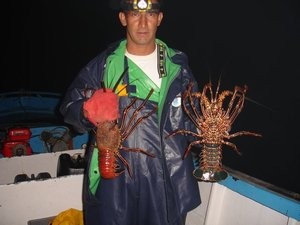Small-scale commercial fishing operations, the kind that often feed millions of people worldwide, can be sustained when managed cooperatively with their communities. This conclusion is drawn from a study published 5 January in the online issue of the journal Nature (paid subscription required).
Nicolas Gutiérrez, a University of Washington fisheries scientist and lead author of the paper, took data on 130 fisheries in 44 developed and developing nations, and included marine and freshwater ecosystems as well as diverse fishing gears and targeted species. He and colleagues assembled the data from scientific literature, government and non-government reports, and personal interviews. They scored them on eight outcomes — ranging from community empowerment, to sustainable catches, to increases in abundance of fish and prices of what was caught.
With 40 percent of the fisheries scoring positively on 6, 7 or all 8 outcomes, and another 25 percent scoring positively on 4 or 5 of the outcomes, the scientists found that community-based co-management holds promise for successful and sustainable fisheries worldwide. Gutiérrez notes “that many community-based co-managed fisheries around the world are well managed under limited central government structure, provided communities of fishers are proactively engaged.”
The team’s statistical analyses show that co-management typically fails without prominent community leadership and social cohesion. Also important are clear incentives that, for example, give fisheries security over the amount they can catch or the area in which they can fish and protected areas. These incentives are especially critical when combined with regulated harvest inside or outside the area and when the protected area is proposed and monitored by local communities.
A successful and larger-scale example of community co-management is in Chile, where in 1988 local fishers in a single community began cooperating along a 2-mile (3.2 kilometer) stretch of coastline. Today it involves 700 co-managed areas with 20,000 small, non-automated fisheries along 2,500 miles (4,000 kilometers) of coastline.
Gutiérrez advises against command-and-control government regulation, at least for these small operations. “The majority of the world’s fisheries are not — and never will be — managed by strong centralized governments with top-down rules and the means to enforce them,” he says.
The project was funded by a grant from the National Science Foundation as well as support from the Fulbright-Organization of American States Ecology Program, and the Pew Charitable Trusts.
* * *


 RSS - Posts
RSS - Posts
[…] This post was mentioned on Twitter by Alltop Science. Alltop Science said: Community Management Can Sustain Small Fisheries http://bit.ly/enkNpt Science.alltop […]
[…] Read more: Community Management Can Sustain Small Fisheries […]